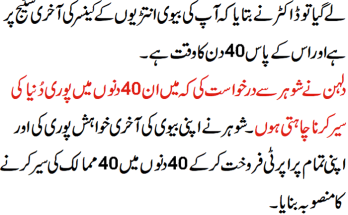Rehabilitation and physical therapy play a critical role in the recovery process following an injury, surgery, illness, or medical condition. These therapeutic practices are designed to help individuals regain function, reduce pain, and improve overall physical well-being. Whether recovering from a sports injury, managing a chronic condition like arthritis, or recovering from a stroke, rehabilitation and physical therapy can make a significant difference in the quality of life and independence of individuals.





This article explores the importance of rehabilitation and physical therapy, the conditions they treat, the types of therapy involved, and how they contribute to recovery and improved health outcomes.
What is Rehabilitation?
Rehabilitation refers to a range of therapies and interventions that help individuals recover from illness, injury, or surgery. The goal of rehabilitation is to restore independence, improve physical and mental functioning, reduce pain, and enhance the overall well-being of the individual. Rehabilitation may include physical therapy, occupational therapy, speech therapy, psychological support, and other specialized treatments.
Rehabilitation can be provided in various settings, including hospitals, outpatient clinics, rehabilitation centers, or even at home, depending on the severity of the condition and the specific needs of the patient.
What is Physical Therapy?
Physical therapy (PT) is a specific type of rehabilitation focused on improving movement, strength, flexibility, and function. PT involves exercises, hands-on techniques, and modalities such as heat, cold, and electrical stimulation to promote healing, relieve pain, and restore mobility.
Physical therapy can be prescribed for a variety of conditions, from musculoskeletal injuries to neurological disorders. It is often used to treat patients after surgery, accidents, or chronic conditions like arthritis and back pain. The main objectives of physical therapy are to:
- Improve movement and flexibility.
- Strengthen muscles and joints.
- Relieve pain and discomfort.
- Prevent further injury.
- Enhance balance and coordination.
- Improve overall functional capacity.
Conditions Treated with Rehabilitation and Physical Therapy
Rehabilitation and physical therapy can be beneficial for a wide range of conditions that affect physical function. Below are some common conditions that benefit from these therapeutic interventions:
1. Musculoskeletal Injuries
Physical therapy is commonly used to treat musculoskeletal injuries, such as sprains, strains, fractures, and dislocations. These injuries can affect bones, muscles, ligaments, tendons, and joints. Rehabilitation helps restore strength, range of motion, and function after these injuries.
- Sports Injuries: Athletes frequently use physical therapy to recover from injuries like ligament tears, tendonitis, and muscle strains.
- Post-Surgical Rehabilitation: After surgeries like joint replacements (e.g., hip, knee) or spine surgery, physical therapy is essential for improving mobility and function.
2. Arthritis and Joint Pain
Arthritis is a common condition that causes inflammation and pain in the joints, leading to reduced mobility. Physical therapy can help individuals with arthritis manage pain, improve joint function, and increase flexibility.
- Osteoarthritis: Physical therapy techniques, such as strengthening exercises, can help relieve the pain and stiffness associated with osteoarthritis.
- Rheumatoid Arthritis: For individuals with rheumatoid arthritis, physical therapy can improve joint mobility and reduce inflammation.
3. Neurological Disorders
Physical therapy is vital for patients recovering from neurological conditions that affect movement, coordination, and balance. Rehabilitation can help improve functional independence and reduce disability associated with these conditions.
- Stroke: Stroke survivors often experience weakness, paralysis, and coordination problems. Physical therapy can help regain movement and improve walking and balance.
- Parkinson’s Disease: Physical therapy helps patients with Parkinson’s improve their mobility, flexibility, and balance to manage symptoms like tremors and rigidity.
- Multiple Sclerosis (MS): Physical therapy can help individuals with MS maintain strength, coordination, and independence as the disease progresses.
4. Chronic Pain and Back Pain
Physical therapy is frequently used to treat chronic pain conditions, including back pain, neck pain, and fibromyalgia. Therapy can help reduce pain, improve posture, and increase mobility.
- Lower Back Pain: Strengthening and stretching exercises can relieve lower back pain and prevent future episodes.
- Neck Pain: For individuals with neck pain, physical therapy helps with postural correction and pain management.
5. Cardiopulmonary Conditions
Physical therapy is also essential for individuals recovering from heart and lung conditions. It helps improve cardiovascular fitness, respiratory function, and overall endurance.
- Heart Surgery Recovery: After a heart attack or heart surgery, rehabilitation programs can help individuals regain strength, improve cardiovascular health, and prevent future heart-related issues.
- Chronic Obstructive Pulmonary Disease (COPD): For individuals with COPD or other respiratory diseases, physical therapy can help improve lung capacity and overall physical endurance.
6. Pediatric Conditions
Rehabilitation and physical therapy are often used to treat children with developmental delays, congenital conditions, or injuries. Early intervention through therapy can help children achieve developmental milestones and improve physical abilities.
- Cerebral Palsy: Physical therapy can help children with cerebral palsy develop muscle strength and coordination.
- Developmental Delays: Therapy programs are tailored to help children catch up on physical milestones such as walking, balancing, and coordination.
Types of Physical Therapy
Physical therapy encompasses a variety of techniques and approaches tailored to the individual’s condition and goals. Some of the common types of physical therapy include:
1. Orthopedic Physical Therapy
This type of therapy is focused on treating musculoskeletal injuries, including fractures, sprains, strains, and post-surgical rehabilitation. Orthopedic physical therapists help individuals improve mobility, strength, and function.
2. Neurological Physical Therapy
For patients with neurological conditions such as stroke, Parkinson’s disease, or multiple sclerosis, neurological physical therapy focuses on improving motor skills, balance, and coordination. This type of therapy may include exercises to strengthen muscles, improve walking, and reduce symptoms like tremors.
3. Cardiopulmonary Physical Therapy
This therapy is used to improve the function of the heart and lungs. Cardiopulmonary physical therapy is often recommended for individuals recovering from heart surgery, respiratory conditions, or cardiovascular disease. It includes exercises that improve cardiovascular fitness and respiratory endurance.
4. Geriatric Physical Therapy
As people age, they may experience conditions that limit mobility and independence, such as arthritis, osteoporosis, or balance issues. Geriatric physical therapy addresses these age-related concerns and aims to improve strength, flexibility, and mobility in older adults.
5. Pediatric Physical Therapy
Pediatric physical therapy is designed to treat children with developmental or physical challenges. It helps children with motor delays, congenital conditions, or injuries to improve their strength, balance, and coordination.
6. Sports Physical Therapy
Sports physical therapy focuses on treating sports-related injuries and improving athletic performance. This type of therapy may involve rehabilitation for injuries like ligament tears, muscle strains, or joint injuries, and it often includes functional exercises aimed at preventing future injuries.
7. Women’s Health Physical Therapy
This specialized area of physical therapy focuses on issues unique to women, such as pelvic floor dysfunction, pregnancy-related conditions, and post-partum rehabilitation. It can help with conditions like urinary incontinence, pelvic pain, and recovery after childbirth.
Techniques and Modalities Used in Physical Therapy
Physical therapists use a variety of techniques to help improve mobility, reduce pain, and promote healing. Some common techniques include:
- Exercise Therapy: Tailored exercises designed to strengthen muscles, improve range of motion, and enhance flexibility.
- Manual Therapy: Hands-on techniques used to manipulate muscles and joints to reduce pain, improve mobility, and promote healing.
- Heat and Cold Therapy: Heat or ice packs can reduce pain, inflammation, and muscle spasms.
- Electrical Stimulation: Electrical currents are used to stimulate muscles and nerves, which can help reduce pain and improve muscle function.
- Ultrasound Therapy: High-frequency sound waves are used to promote healing by increasing blood flow and reducing inflammation.
- Traction Therapy: Gentle pulling or stretching of the spine to alleviate pressure on the vertebrae and discs.
Benefits of Rehabilitation and Physical Therapy
Rehabilitation and physical therapy offer a wide range of benefits to individuals recovering from injury, surgery, or illness. Some key benefits include:
- Pain Relief: Physical therapy techniques help reduce pain, discomfort, and inflammation in the affected area.
- Improved Mobility: Rehabilitation helps individuals regain their ability to move freely and perform daily activities.
- Enhanced Strength and Endurance: Therapy can help build muscle strength and stamina, which is essential for overall health and function.
- Prevention of Further Injury: Through exercises and education on body mechanics, physical therapy can help reduce the risk of future injuries.
- Restoration of Independence: Physical therapy aims to help individuals regain their independence and improve their quality of life by enhancing functional abilities.
Conclusion
Rehabilitation and physical therapy are essential components of recovery for individuals dealing with injuries, surgeries, chronic conditions, and neurological disorders. These therapeutic practices provide valuable support in restoring movement, relieving pain, and improving quality of life. Whether it’s recovering from a sports injury, managing chronic pain, or improving mobility after a stroke, rehabilitation and physical therapy offer personalized treatment plans to help individuals achieve their physical goals and regain independence. With the right approach and a commitment to therapy, individuals can recover faster, prevent further injuries, and lead more active, fulfilling lives.



